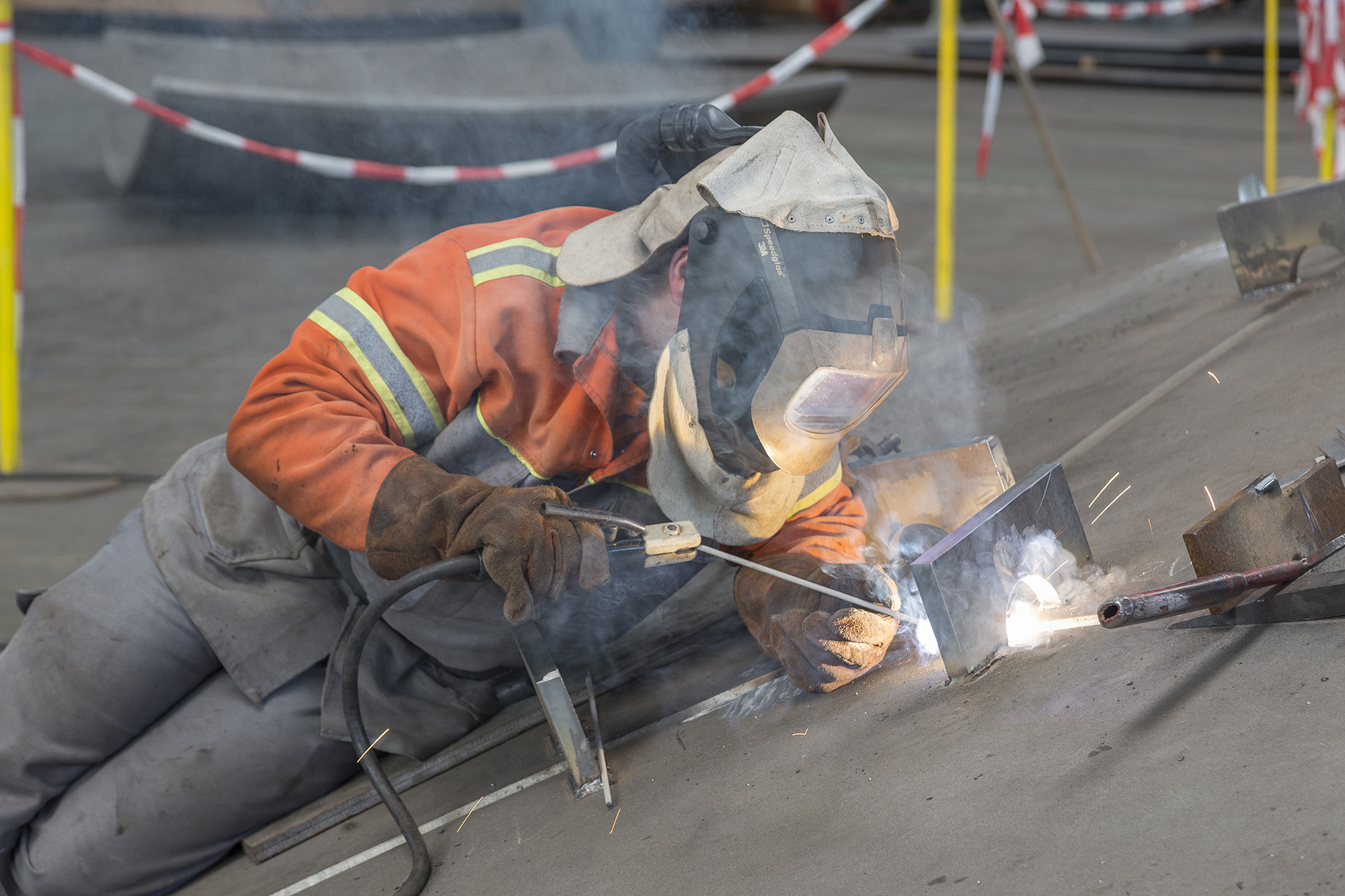The suitability for welding of steels is determined by the sum of carbon equivalents of the chemical elements like manganese, nickel or chromium contained in the molten steel. To do this, the carbon equivalents of the individual elements are added. The sum of this is the carbon equivalent mentioned in the list of articles. With the help of these values, each person in the production can evaluate, whether the steel plate can be welded or subject to autogenous cutting. In this way, the steel buyer specifies simply the steel and its welding suitability while placing the order.
However, different carbon equivalents have become established in practice. Depending upon the steel type, welding process, usage, product and manufacturing standards, the following carbon equivalents are being used, amongst others:
CEV (or CE) = C + Mn/6 + (Cu + Ni)/15 + (Cr + Mo + V)/5
- The aim of CEV is to prevent crack formation caused by too strong heating by quickly cooling it directly near the welding seam.
- Maximum CEVs are defined for the European construction steels according to EN 10025.
- EN 1011-2 specifies a method A for the operator, with which he - depending upon the CEV - can calculate the pre-heating temperature.
CET = C + (Mn + Mo)/10 + (Cr + Cu)/20 + Ni/40
- The aim of CET is to prevent cracks caused by hydrogen brittleness of the steel through too short hydrogen effusion times in the temperature range of 100 °C to 300 °C near the welding seam.
- EN 1011-2 specifies a method B for the operator, with which he - depending upon the CET - can calculate the pre-heating temperature.
PCM = C + Si/30+ (Mn + Cu + Cr)/20 + Ni/60 + Mo/15 + V/10 + 5 B
- PCM is used, in particular, in case of very strong cooling as done for root seams.
- PCM is common in offshore standards such as in EN 10225 and is also used in American manufacturing standard AWS D1.
Depending upon the method used and the type of carbon equivalent, there can be different pre-heating temperatures for welding. However, the following is common to all carbon equivalents: The lower is its value, the simpler and more economical is the processing of the steel. This knowledge is the driving force for Dillinger for developing the so-called TM-rolled steels with extremely low carbon equivalents in ever-increasing plate thickness.
Aktien-Gesellschaft der Dillinger Hüttenwerke, Werkstraße 1, 66763 Dillingen/Saar, Telefon: +49 6831 47 0, Telefax: +49 6831 47 2212, Sitz: Dillingen/Saar, Registergericht: Amtsgericht Saarbrücken HRB 23001, Vorsitzender des Aufsichtsrats: Reinhard Störmer, Vorstand: Stefan Rauber (Vors.), Joerg Disteldorf, Daniël Nicolaas van der Hout, Dr. Peter Maagh, Markus Lauer, Jonathan Weber
Imprint
Privacy policy
Copyright © 2016 Dillinger. All rights reserved.
Imprint
Privacy policy
Copyright © 2016 Dillinger. All rights reserved.



